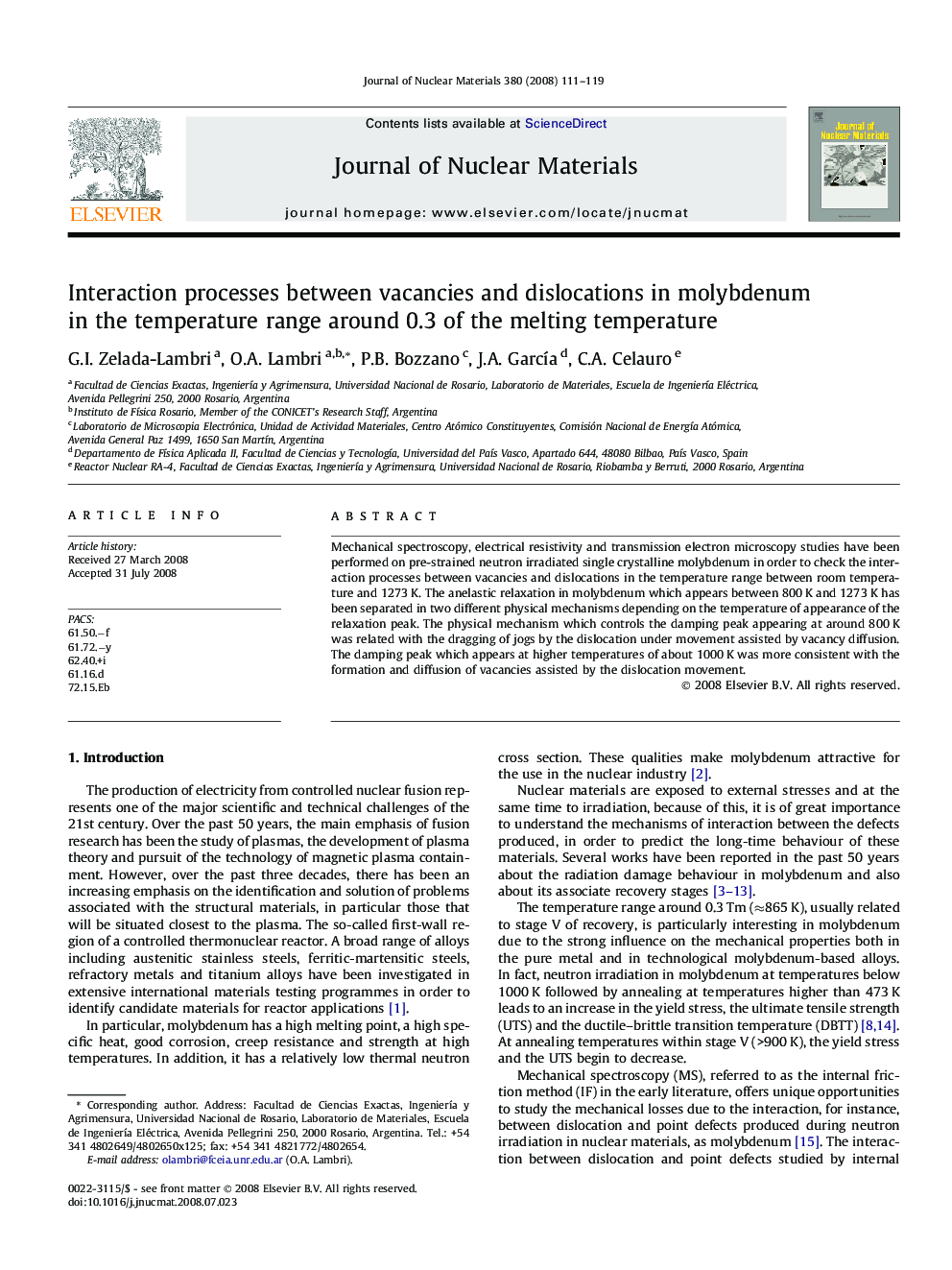| Article ID | Journal | Published Year | Pages | File Type |
|---|---|---|---|---|
| 1568902 | Journal of Nuclear Materials | 2008 | 9 Pages |
Abstract
Mechanical spectroscopy, electrical resistivity and transmission electron microscopy studies have been performed on pre-strained neutron irradiated single crystalline molybdenum in order to check the interaction processes between vacancies and dislocations in the temperature range between room temperature and 1273Â K. The anelastic relaxation in molybdenum which appears between 800Â K and 1273Â K has been separated in two different physical mechanisms depending on the temperature of appearance of the relaxation peak. The physical mechanism which controls the damping peak appearing at around 800Â K was related with the dragging of jogs by the dislocation under movement assisted by vacancy diffusion. The damping peak which appears at higher temperatures of about 1000Â K was more consistent with the formation and diffusion of vacancies assisted by the dislocation movement.
Related Topics
Physical Sciences and Engineering
Energy
Nuclear Energy and Engineering
Authors
G.I. Zelada-Lambri, O.A. Lambri, P.B. Bozzano, J.A. GarcÃa, C.A. Celauro,
